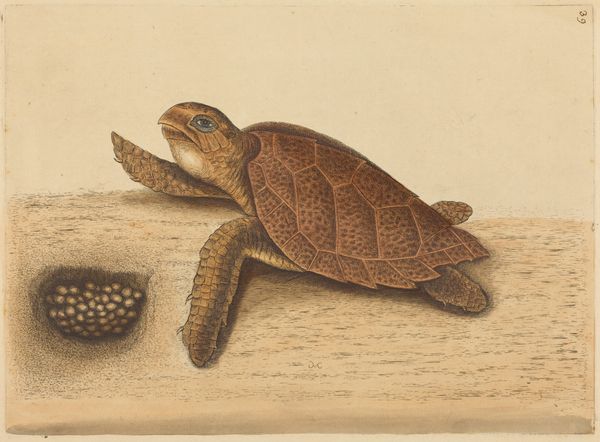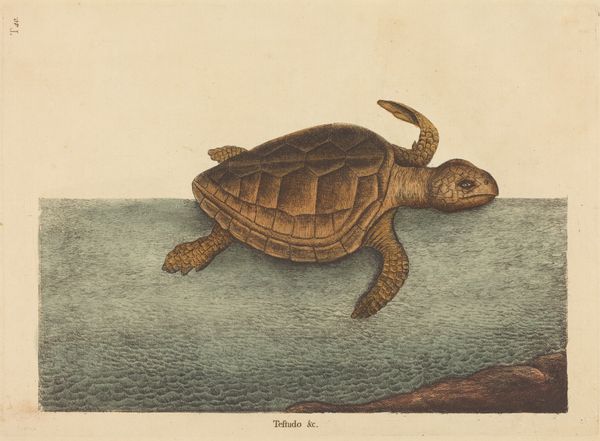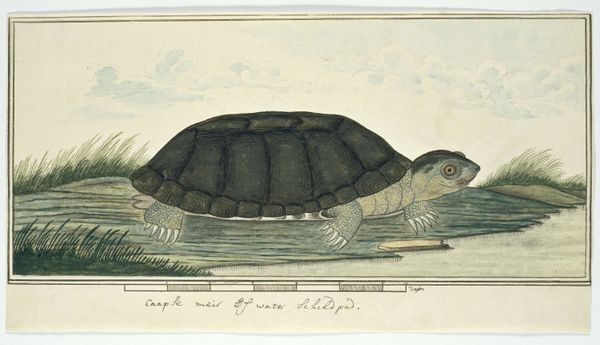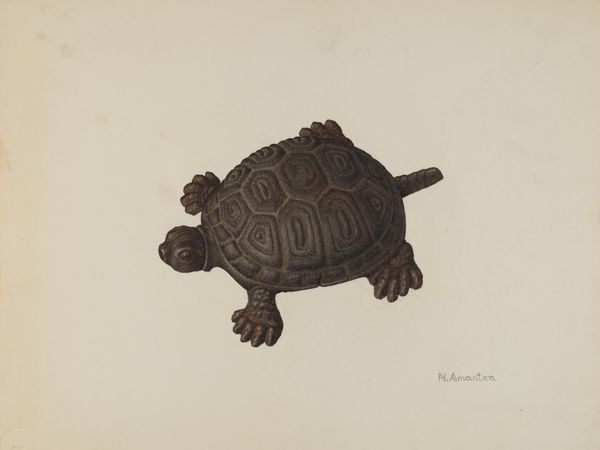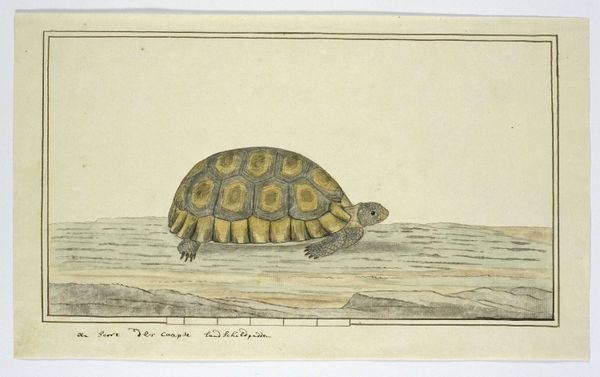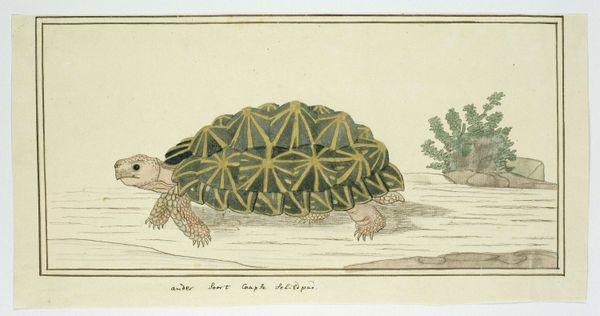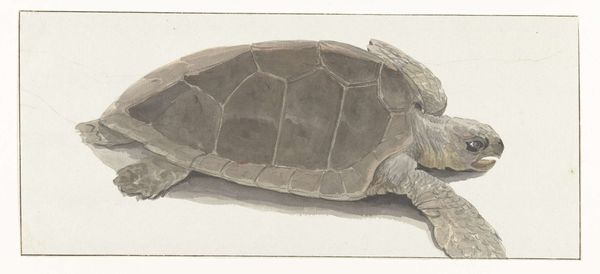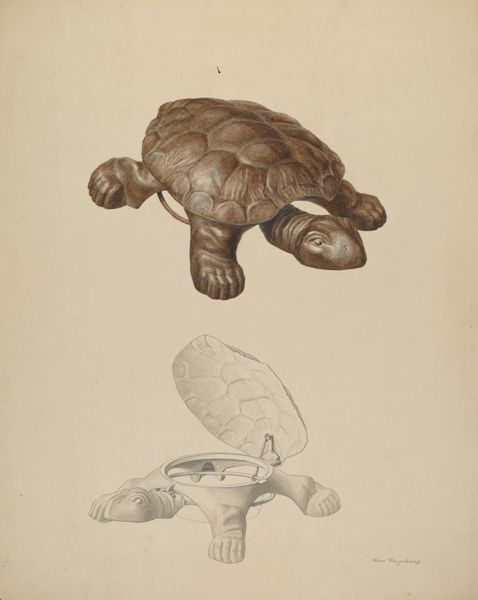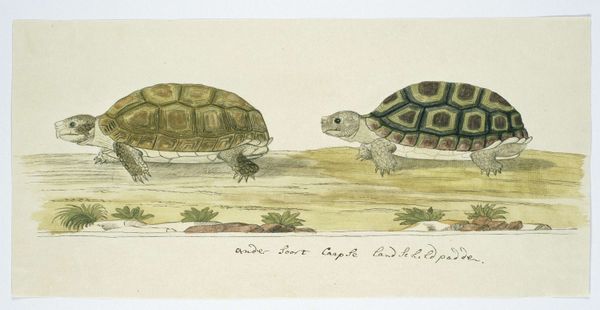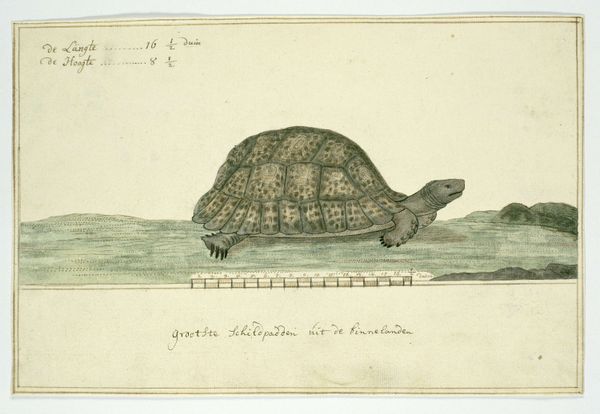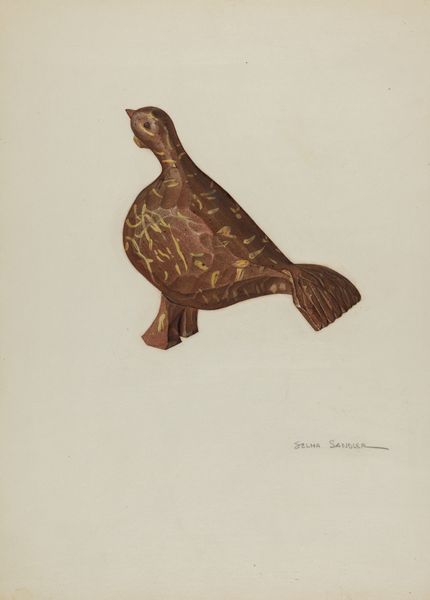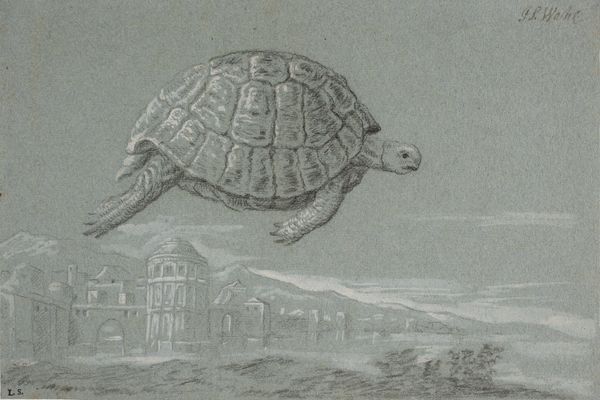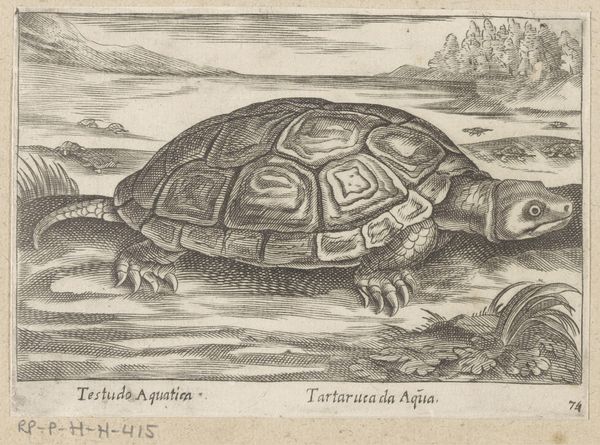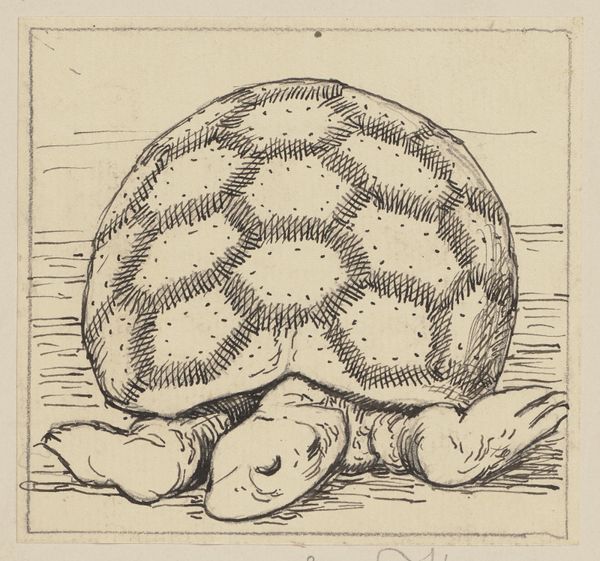
drawing, print, watercolor
#
drawing
# print
#
landscape
#
watercolor
#
coloured pencil
#
watercolour illustration
#
watercolor
#
realism
Dimensions: plate: 25.7 x 35.1 cm (10 1/8 x 13 13/16 in.) sheet: 35.7 x 53.8 cm (14 1/16 x 21 3/16 in.)
Copyright: National Gallery of Art: CC0 1.0
Editor: We're looking at Mark Catesby's "The Hawks-bill Turtle," likely from between 1731 and 1743, made with watercolor, drawing, and print. It feels so precise, almost like a scientific record. What strikes you about this piece? Curator: Well, let's consider the labor involved. Catesby wasn't just depicting nature; he was *producing* an image for a specific market. Think about the paper itself, the pigments – where did those materials come from? What does this tell us about colonial economies and the consumption of the 'New World'? Editor: So, not just about the turtle itself, but about the whole system that made this image possible? Curator: Exactly! The watercolor technique, replicated through printmaking – it speaks to a desire for mass dissemination of knowledge, but also a commodification of the natural world. Was Catesby doing this independently, or was this work commissioned or funded somehow? It really shows an explicit use of resources. Editor: It does make me think about how nature was being "packaged" and consumed by Europeans back then. Almost like a very early form of nature documentary? Curator: Perhaps, but a documentary implies objectivity. This image is deeply embedded within a web of colonial power dynamics, the exploitation of resources, and the burgeoning scientific market. How did Catesby’s access to the Turtle and the place it inhabits impact what we see here? Editor: So, even a seemingly simple image can reveal so much about production and consumption. I never really thought about it that way. Curator: It's about looking beyond the surface, acknowledging the labor, the materials, and the economic forces that shaped its creation. Editor: I'll definitely look at art differently now, considering not just *what* is depicted but *how* and *why* it was made. Thanks for this insightful perspective.
Comments
No comments
Be the first to comment and join the conversation on the ultimate creative platform.
